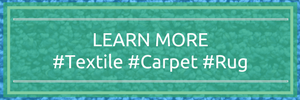The History of Topical Treatments for Carpet
In 1986, DuPont introduced Stainmaster®, bringing about a revolution in the carpet industry. Before this introduction, most consumers purchased carpet in colors designed to hide soil and stains, they were not concerned with exposure to everyday accidents. Some spills such as Kool-Aid®, soda spills, and coffee could become permanent stains. This new technology was a breakthrough in stain resistance, but you must use common sense when selecting carpet color and realize that some spills, while not permanent, may require a lot effort and proper chemicals to remove.
How Stain Resistant Technology Works
The technology of how these topical treatments work is really quite simple. They work in a similar manner in which dyes attach to the carpet fiber. Fibers have dye sites, which allow dye to penetrate the fiber. In residential fibers, these dye sites have a positive electrical charge. Dyes, having a negative electrical charge, are applied to the fiber and these opposite charges neutralize one another. This allows the dye to bond to the fiber. Many food items like, Kool-Aid®, and Gatorade® use the same negatively charged dyes to add color to the drink. When spilled on untreated fiber, these dyes bond to the fiber in the same way as dyes used in coloring fibers. This bond results in a permanent stain. The principle of stain-resistant chemistry is such that in dyeing carpet fibers, not all dye sites are neutralized by the dyes. These positively-charged dye sites remain available to accept any unwanted dyes. In essence, a colorless dye is added to the carpet face fiber after dyeing, which neutralizes all remaining dye sites and limits the acceptance of new dyes from common household spills. While the technology is a bit different from this description, this is a simple explanation of the theory involved.
Soil Treatments vs. Stain Treatments
Before the introduction of Stainmaster®, the primary fabric treatments available were Scotchgard™ and Teflon™. These treatments added surface tension to the fiber, which caused spills to bead up on the surface of the fiber, known as repellency. This property acted in much the same manner as a Teflon™ frying pan. The treatment repels the spills and, if removed immediately, it will eliminate many spills. You can repel dry soil in the same manner, allowing the soil to release, thus improving carpet cleaning results. However, these treatments have the tendency to slowly wash away with routine carpet cleaning, and foot traffic tends to wear these treatments away. These treatments are different from stain treatments, in that stain treatments are designed to prevent permanent staining and never need to be reapplied. Soil treatments are designed to make carpet cleaning easier and you should reapply every 3 to 5 years. In dyeing carpet, bleaches and stripping agents are used to remove carpet dye. Remember, since stain resist treatments are similar to carpet dye, these treatments are stripped. When dyeing carpet, make sure you have the carpet dye and reapply the stain resist treatment after dyeing.
Throughout the history of topical treatments for carpet, the industry has seen several different approaches that all have their benefits, yet all focusing on the same goal: keeping carpet clean. With today’s technologies with have proven that soil treatments and stain treatments are both very crucial in the proper maintenance of your residential carpets. Click the picture below to visit our Textile, Carpet & Rug page!



